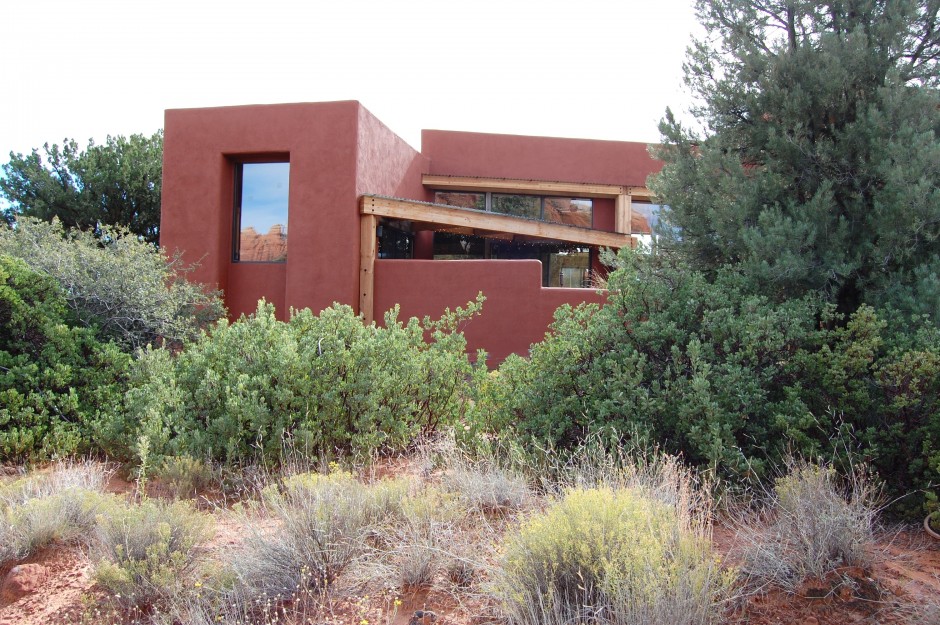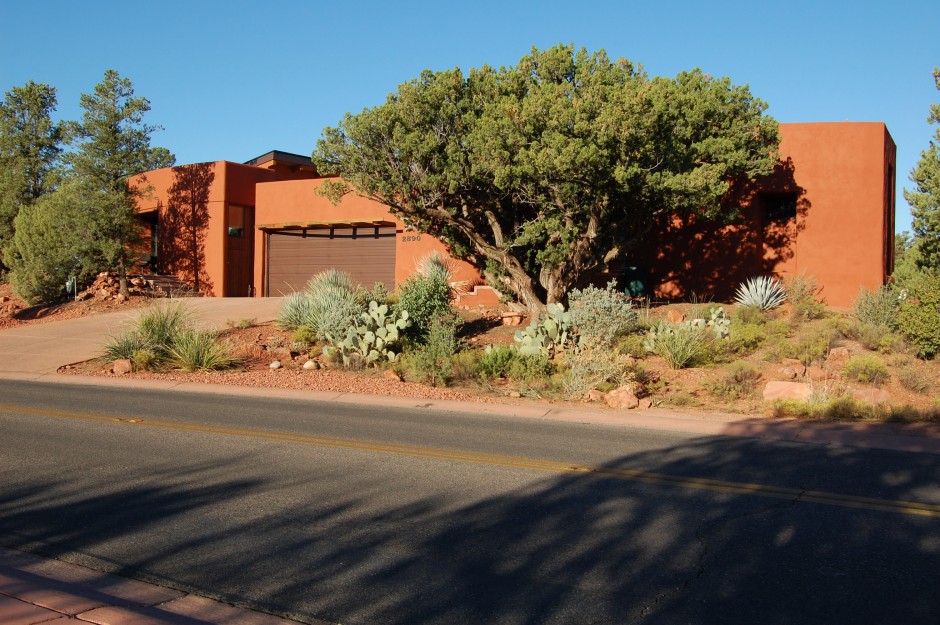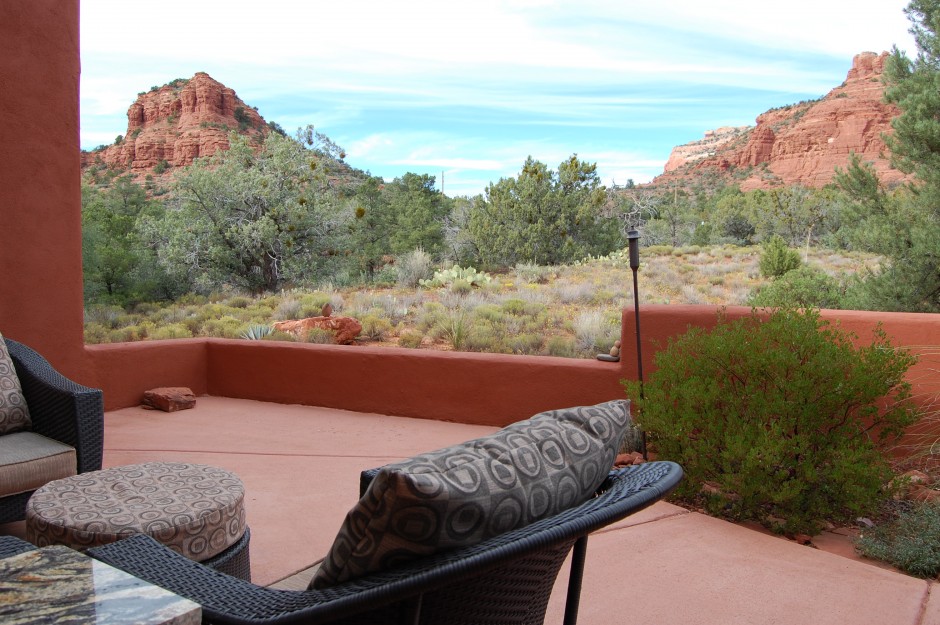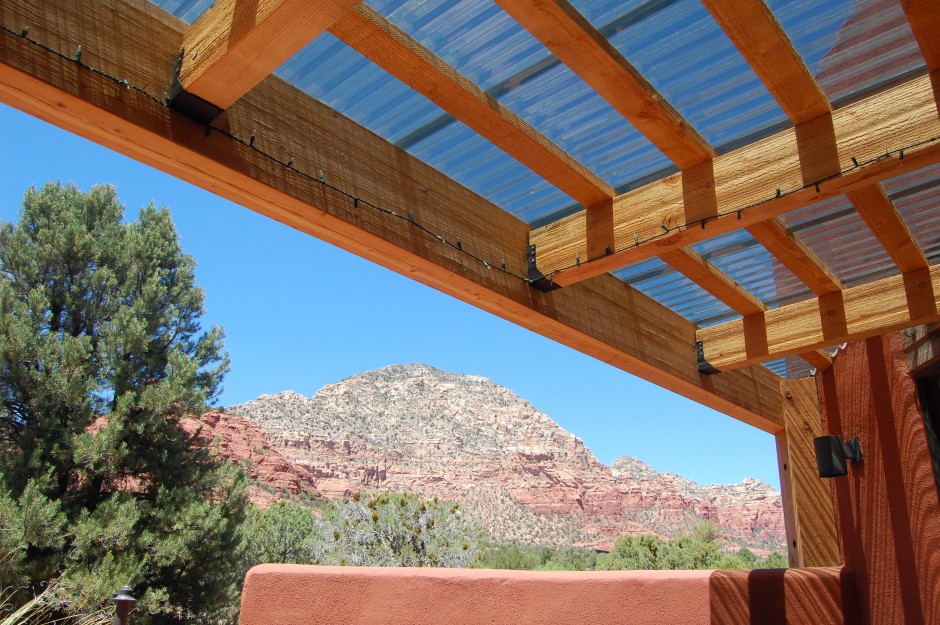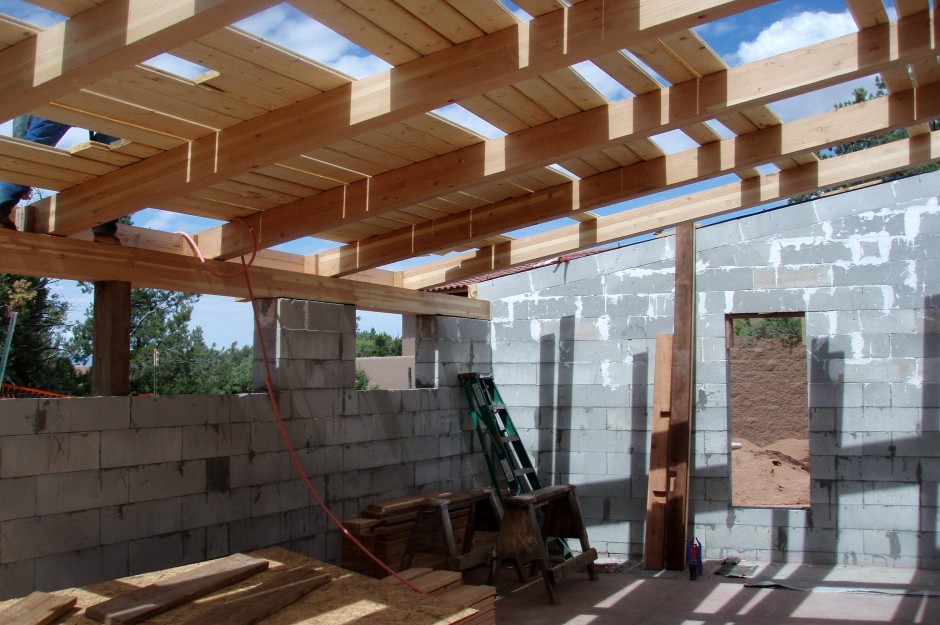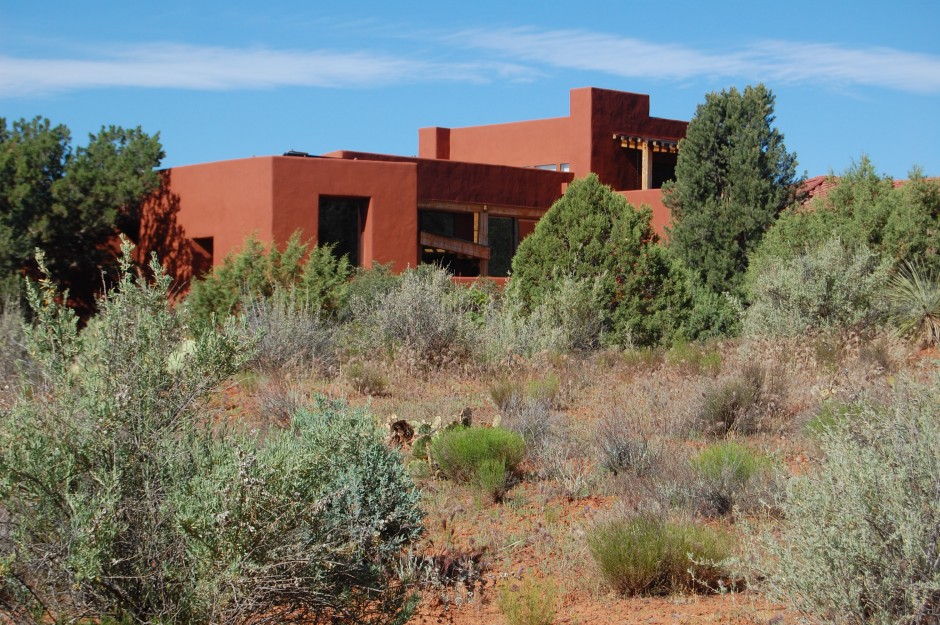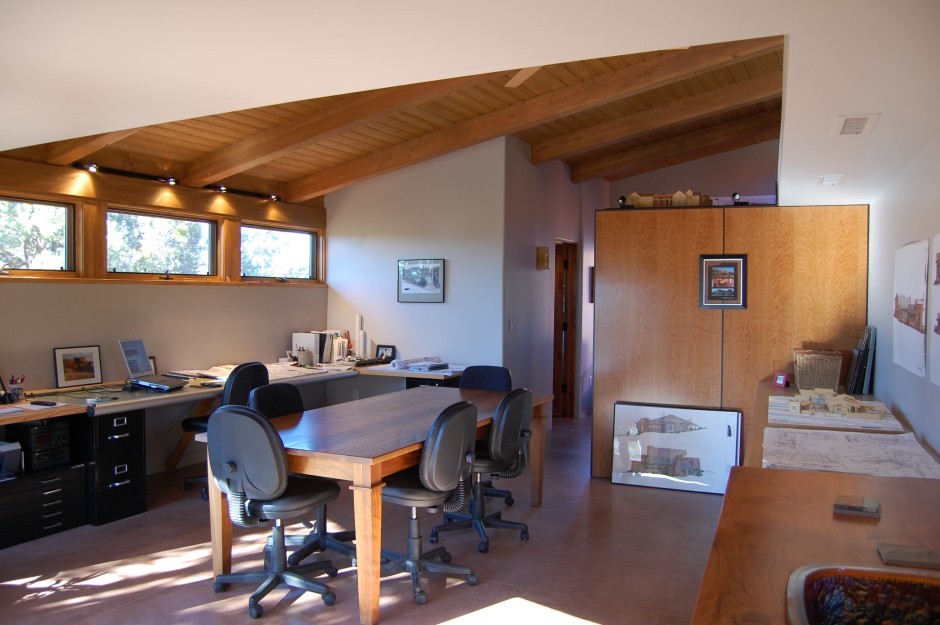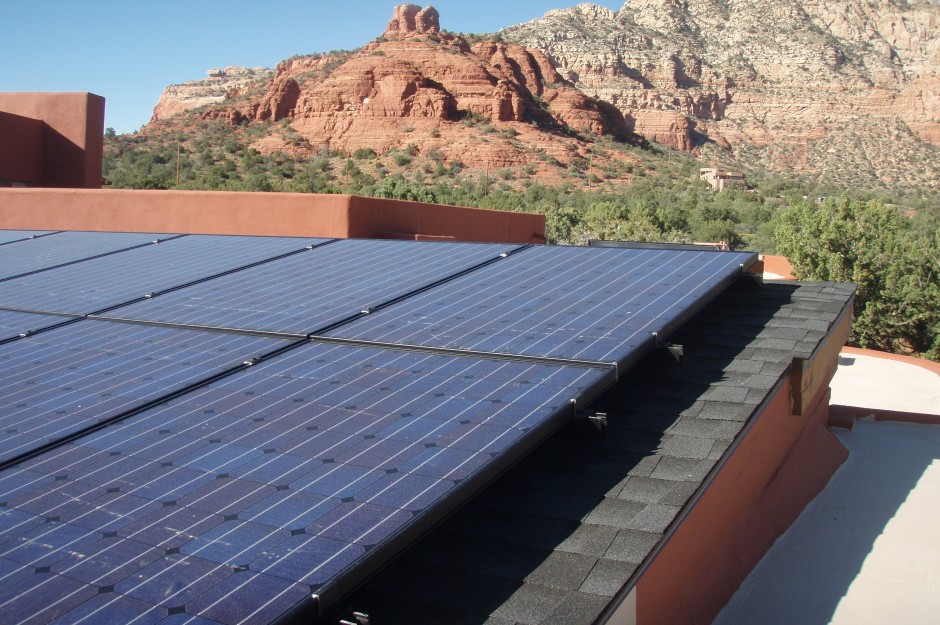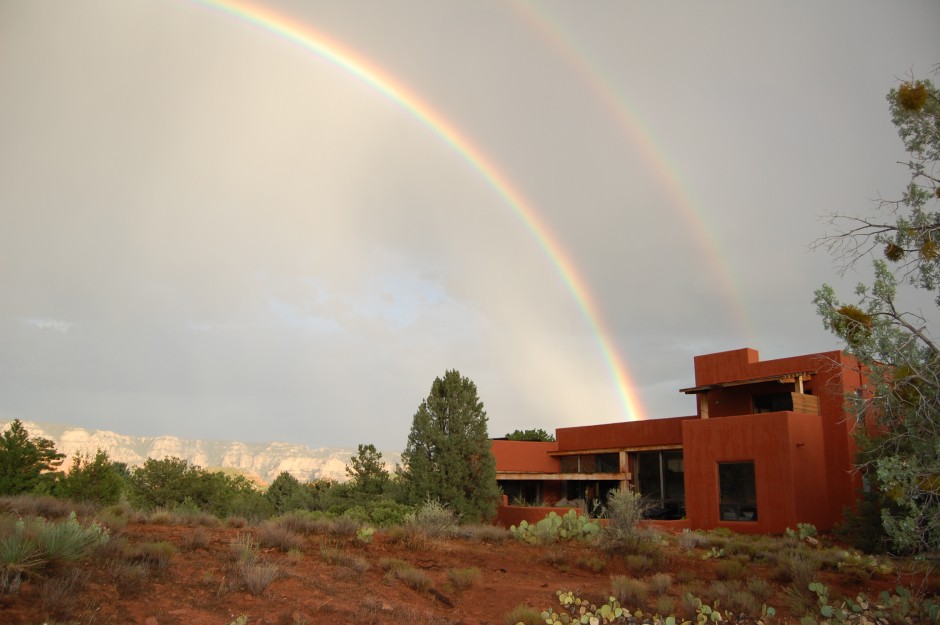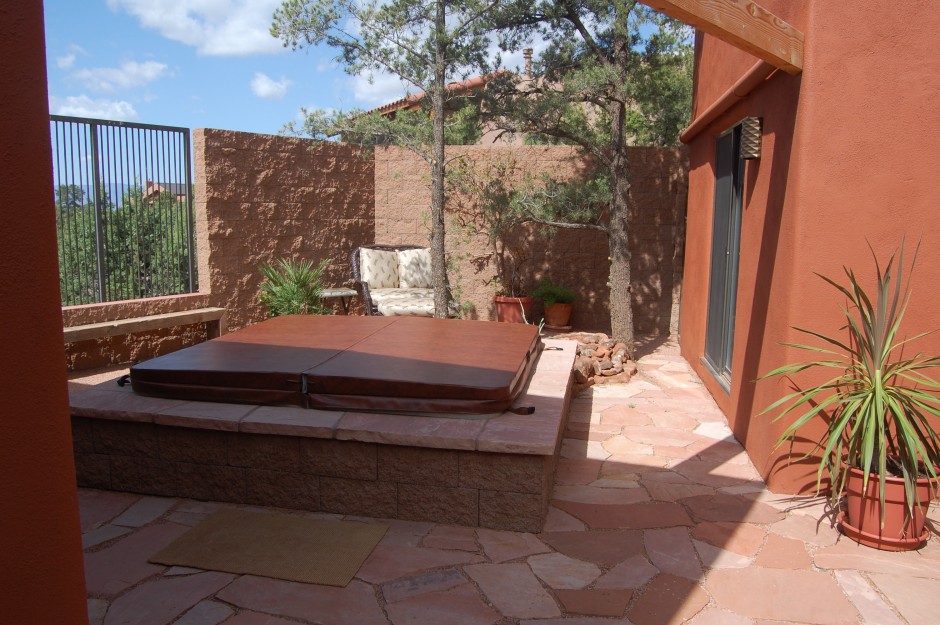Hover over image to stop animation or click any image to manually view the slideshow via overlay.
Client: Brandt Hoffman, Eric Brandt Architect
Location: Sedona, AZ
Date:
Residence Completed 1998,
Studio Completed 2010
This is our personal home, a modern pueblo design with bright and airy spaces. Adjoining and overlooking the national forest and the red rocks, the home is designed to fully integrate with the desert surroundings. The 2010 studio addition incorporates many sustainable design systems for the entire home including:
A photovoltaic electric system
The grid-tied, 28 panel, 6.7 kW solar array is sized to power the entire home and studio. The panels follow the low-slope of the studio addition and are hidden from the street view by trees and parapets. They are purposefully integrated into the structure for a low-profile installation.
Geothermal heating and cooling
This ground-source heat pump is a completely renewable energy system because the electric to run the system comes from the sun. The heat removed from air-conditioning is placed in the ground. Then, in the winter, the system reverses and heat is retrieved from the ground. Normally, the ground is a constant 64 degrees 15 feet below the surface. There are three 6” diameter wells; each are 350 feet deep.
Solar hot water system
The closed-loop system has two, roof-mounted 3 foot x 8 foot panels and an 80 gallon heat exchanger tank. the back-up water heater’s natural gas bills have been cut in half. These three renewable energy systems enable the home to be near net-zero for energy use.
The following green construction, sustainable design features are integrated into the studio construction:
Exterior walls are constructed of Navaho Flex-Crete. Flex-Crete is a light-weight, aerated, solid concrete block. It is a green material because of its recycled content, superior insulative qualities and a local-sourced material. It is composed mostly of inert fly-ash, the by-product from the coal-burning power plant at Page, Arizona. It provides both thermal mass, like adobe, and integral insulation to temper the extreme high and low temperatures of the high desert. The 8-inch thick walls provide an insulation rating of about R-19. The walls are stucco-finished outside and gypsum-plastered inside. The plaster was kept purposefully thin to highlight the blocks. The interior and exterior was then finished with highly vapor-permeable paint.
Roof insulation is polyiso foam board insulation. Polyiso rigid foam insulation is a closed cell, highly effective insulation. The 4.5” thickness provides R-36 insulation. It is installed continuous in two overlapped layers, which eliminates the thermal-bridging from trusses or other 2x rafters, and makes the effective R-value even higher.
The finished floor is integral color, hard-troweled concrete. The structural slab also serves as the finish flooring. This reduces the quantity of materials and embodied energy. The perimeter is insulated for winter comfort and lower energy use.
Passive solar heating and shading techniques are integrated. The studio opens to the south-eastern, winter-morning sun that is used to heat the well-insulated studio space. Other glazing considerations include balanced glazing to reduce lighting loads and reduced north-eastern and western openings to avoid overheating. Future trombe-wall applications are planned for the studio. Further passive solar gain applications were reserved in favor of reduced glare in the full-time design studio


